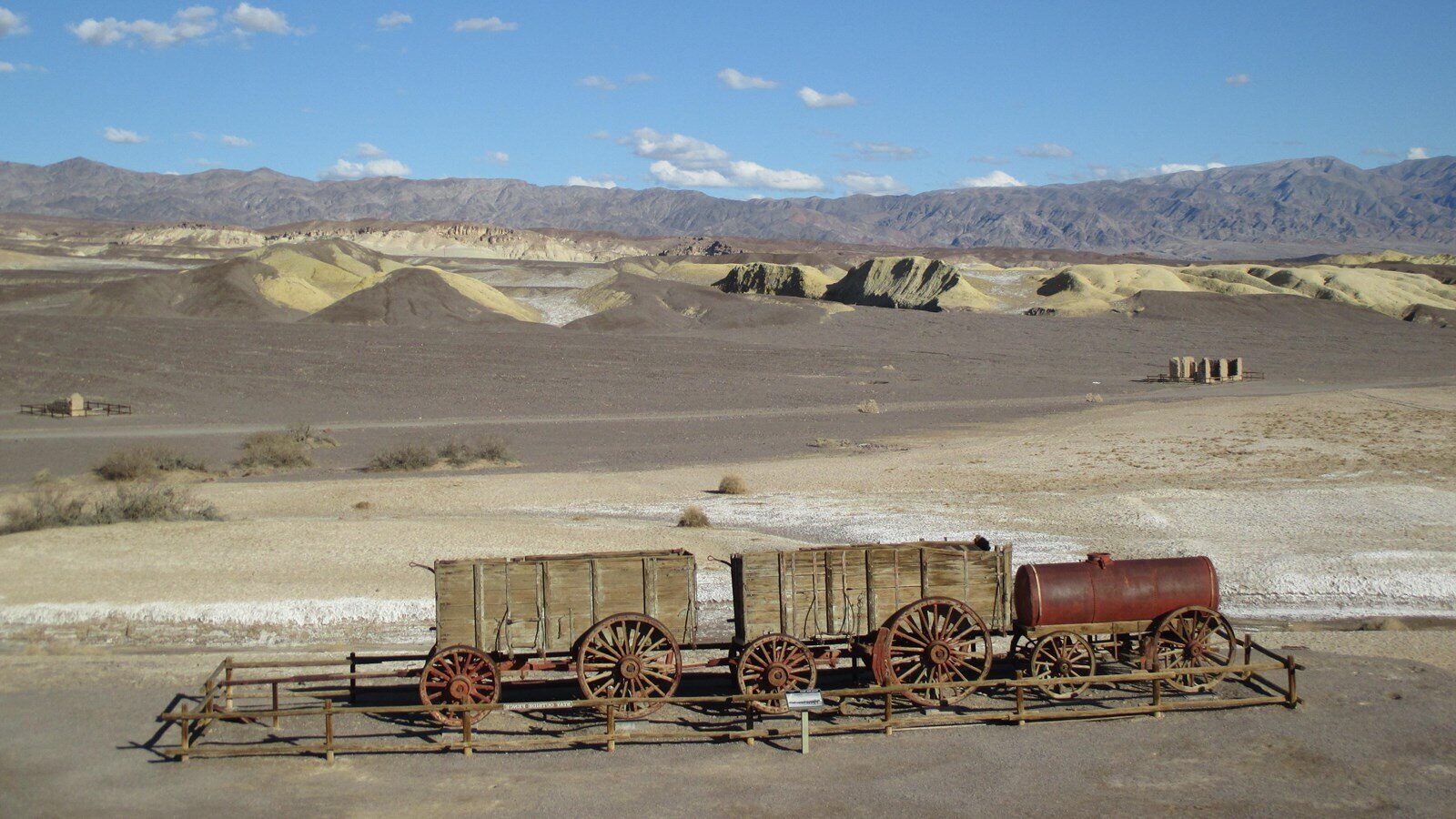Lost Borax Mines Of Death Valley

Ever wondered about the lost borax mines of Death Valley? These hidden gems tell a story of adventure, hardship, and discovery. In the late 1800s, prospectors flocked to this harsh desert landscape, hoping to strike it rich with borax, a valuable mineral used in everything from cleaning products to glassmaking. The borax mines became a lifeline for many, despite the scorching heat and treacherous terrain. Today, these abandoned sites offer a glimpse into a bygone era, where determination and grit were the order of the day. Ready to learn more about these fascinating relics of the past? Let's dive in!
The Fascinating History of Borax Mining in Death Valley
Death Valley, known for its extreme temperatures and arid landscape, holds a treasure trove of history beneath its surface. Borax, often called "white gold," played a crucial role in the development of this region. Let's explore some of the most intriguing borax mines in Death Valley.
1. Harmony Borax Works
Harmony Borax Works stands as a testament to the early days of borax mining in Death Valley. Established in the 1880s, it became famous for its "20 Mule Team" wagons that transported borax across the desert.
- Location: Near Furnace Creek
- Significance: First successful borax mining operation in Death Valley
- Attractions: Historic ruins, interpretive signs, and a short walking trail
2. Eagle Borax Works
Eagle Borax Works, though less known, played a significant role in the borax industry. It operated for a brief period but left a lasting impact on the region's mining history.
- Location: Near Furnace Creek
- Significance: One of the earliest borax processing sites
- Attractions: Remnants of the processing plant and historical markers
3. Amargosa Borax Works
Amargosa Borax Works, located in the Amargosa Valley, was another key player in the borax mining industry. Its strategic location made it an important site for borax extraction and processing.
- Location: Amargosa Valley
- Significance: Major borax production site in the late 19th century
- Attractions: Ruins of the processing plant and scenic desert views
4. Greenland Ranch Borax Mine
Greenland Ranch Borax Mine, situated in the heart of Death Valley, contributed significantly to the borax boom. Its proximity to other mining sites made it a vital part of the borax supply chain.
- Location: Central Death Valley
- Significance: Integral part of the borax mining network
- Attractions: Historical artifacts and stunning desert landscapes
5. Borax Lake Mine
Borax Lake Mine, located near the famous Borax Lake, was a prominent borax extraction site. Its unique location provided ample resources for borax production.
- Location: Near Borax Lake
- Significance: Key borax extraction site
- Attractions: Scenic lake views and remnants of mining equipment
6. Monte Blanco Borax Mine
Monte Blanco Borax Mine, nestled in the Panamint Range, offered a different perspective on borax mining. Its mountainous location presented unique challenges and opportunities for miners.
- Location: Panamint Range
- Significance: Mountainous borax mining site
- Attractions: Panoramic views and historical mining structures
7. Borate and Daggett Railroad
Borate and Daggett Railroad, though not a mine itself, played a crucial role in transporting borax from the mines to processing plants. This railroad was a lifeline for the borax industry.
- Location: Connecting various mining sites
- Significance: Essential transportation route for borax
- Attractions: Historical railroad remnants and interpretive signs
8. Ryan Camp
Ryan Camp, a former mining camp, offers a glimpse into the lives of borax miners. This site provides a unique perspective on the human aspect of borax mining in Death Valley.
- Location: Near Furnace Creek
- Significance: Historical mining camp
- Attractions: Restored buildings and interpretive exhibits
9. Old Dinah
Old Dinah, a steam tractor, was an innovative attempt to replace the 20 Mule Teams. Although it was not successful, it remains a fascinating piece of borax mining history.
- Location: Furnace Creek
- Significance: Early attempt at mechanizing borax transportation
- Attractions: Restored steam tractor and historical displays
10. Death Valley Junction
Death Valley Junction, once a bustling hub for borax miners, now serves as a historical landmark. Its unique architecture and rich history make it a must-visit site.
- Location: Near the eastern entrance of Death Valley
- Significance: Key junction for borax transportation
- Attractions: Historic buildings, the Amargosa Opera House, and museum exhibits
Discovering the Hidden History
Exploring the lost borax mines of Death Valley reveals a fascinating chapter of American history. These mines, once bustling with activity, played a crucial role in the development of the West. The harsh conditions faced by miners and the innovative methods they used to extract borax are a testament to human resilience and ingenuity.
Visiting these sites today offers a unique glimpse into the past. The remnants of old mining equipment, abandoned structures, and the vast, desolate landscape create an eerie yet captivating atmosphere. It's a stark reminder of the challenges and triumphs of those who toiled here.
Whether you're a history buff, an adventure seeker, or someone who loves exploring off-the-beaten-path destinations, the lost borax mines of Death Valley are worth a visit. They offer not just a trip through history but also a deeper appreciation for the rugged beauty of this iconic American landscape.

